Jaime Carrejo’s sculpture installations force viewers to see “the border” differently
Jaime Carrejo has been making art since before he even knew what “art” was. He just knew he liked to make things, experiment with different materials and surfaces, maybe do some painting, maybe burn some things in the backyard (as curious kids do).
As his art education progressed through high school, college, and graduate school, his creative motivation came from exploring the idea of difference and trying to understand people better.
“That has always been an anchor point for me,” he says. “I’m primarily trying to understand people from different backgrounds and also understand why we would treat people differently, and I’m using my art to explore that.”
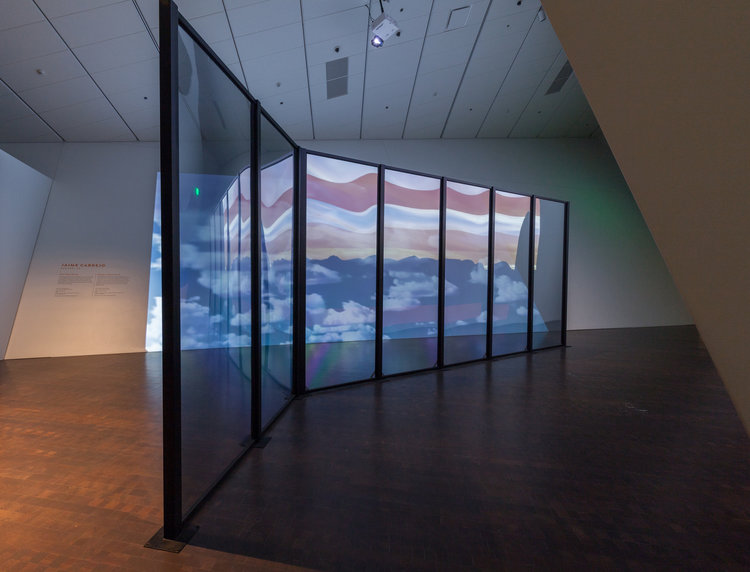
For the last 10 years or so, he says, he has been much more interested in creating “questions.” His projects are intended to ask a general overarching question and are distilled down into “general moments” that people can reflect on and ask those questions for themselves. This work, he says, feels all the more pressing in this current cultural and political moment of perpetual outrage and opinions-as-facts.
Though he lives in Denver now, the El Paso native has been creating a lot of work exploring issues around the border, asking what it means to be a citizen and the messy in-betweens of that.
“It’s a very simple and easy thing to say, ‘Immigrants are bad therefore we should close our borders.’ What’s harder to do is unpack all the ways that may be problematic, whether in the policies we adopt or first asking why people would want or need to come here. How is the U.S., a country of immigrants, about to eradicate that history just to create a simpler dialogue?”
His desire is to use his work to take a step back and just ask questions: What does this say about us? What does this say about our culture? Is it good or bad? His hope is for the end result to land somewhere between politics, poetics, and empathy.
When he first started making work around the idea of “the border” he found it made his uneasy. Even though he is of Latin descent, he says, it was hard to wrap his head around the whole concept. He found himself wrestling with questions like, why didn’t my parents teach me Spanish when I was growing up on the border in El Paso? Why do I hunger for more of a connection with my ancestral culture?
“It was very uncomfortable,” he remembers.
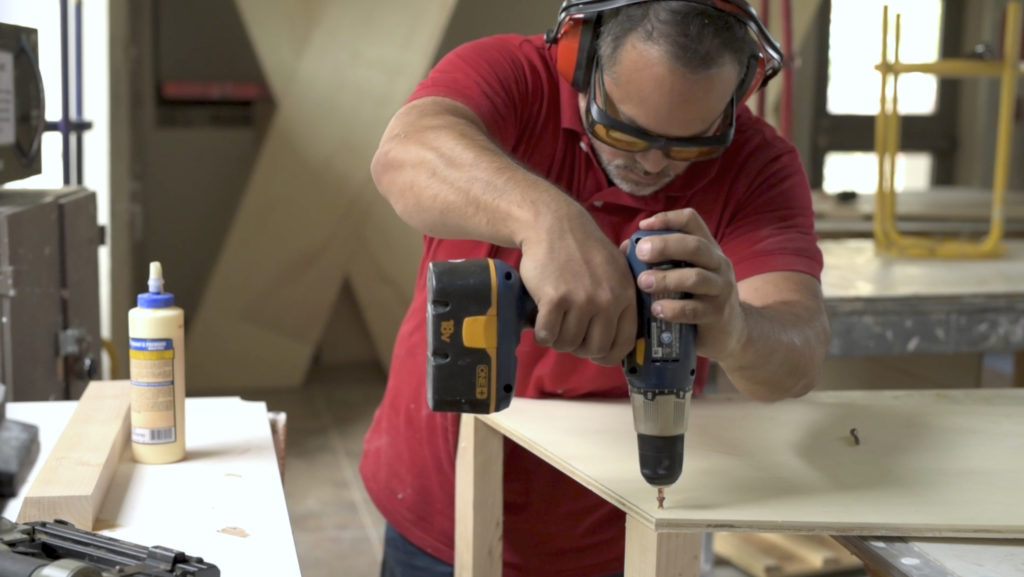
He spent some time making paintings with papel picado, a traditional Mexican craft art made from cut paper. He used these works to explore imagery of day workers and laborers, thinking about his own family—his grandmother who never finished fourth grade and dropped out of school so she could work cleaning houses; the uncle who dropped out of 11th grade so he could work on a farm to support his family.
“I tried making these icons to understand what that meant [to have to drop out of school to spend a life as a laborer] and celebrate of those practices,” Carrejo said. “I created halos around these people who were working.”
When he returned to his hometown of El Paso after living in Ohio, he found that a border wall had been erected.
“We all knew it was coming, but how it changed the relationships of the people who live in the borderland was much more drastic than I or my parents or anyone anticipated,” he said. “This structure that was erected punctuated the separation of these two countries in citizenship and in nationality, but El Paso and Juarez are not like two separate cities or two separate countries; they were like one big neighborhood. To have to recontextualize your whole relationship to the ‘neighborhood’ based on this architectural structure is challenging.”
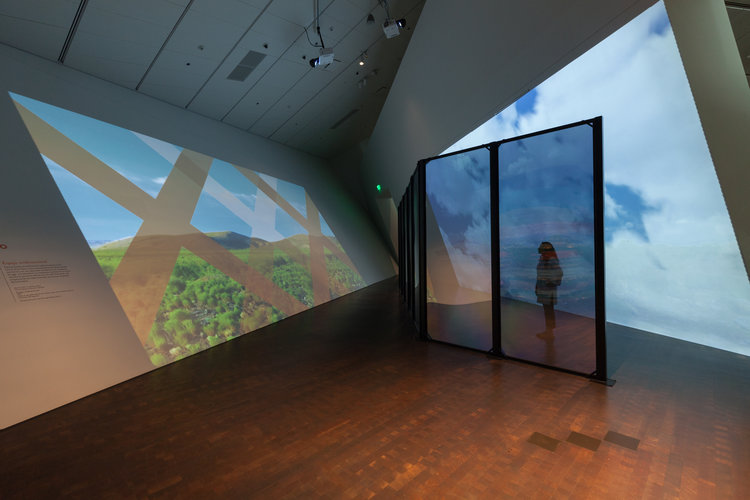
He started making abstract images based on the border landscape and border wall, that metal scar marring the beautiful landscape of the Chihuahuan Desert.
“The concept [of this border wall] was so foreign to me and it was so hard to wrap my head around it, so the poetics and language of the abstract was the only way for me to make sense of it.”
He had an opportunity to present a large-scale abstract exploration of the border wall at an exhibit at the Denver Art Museum called Mi Tierra. They wanted site-specific installations for this exhibit and Carrejo found himself drawn to the fourth floor of the Frank Gehry-designed museum, where the walls are slanted and disorienting.
Carrejo decided to erect a half-scale replica of the border wall and replaced the mesh panel with a 50/50 tinted and mirrored Plexiglas.
“It had this weird property where you could see yourself in it but you could also see through it depending on the light, so one side would be opaque sometimes where the other side had the ‘privileged’ sight,” he explains.
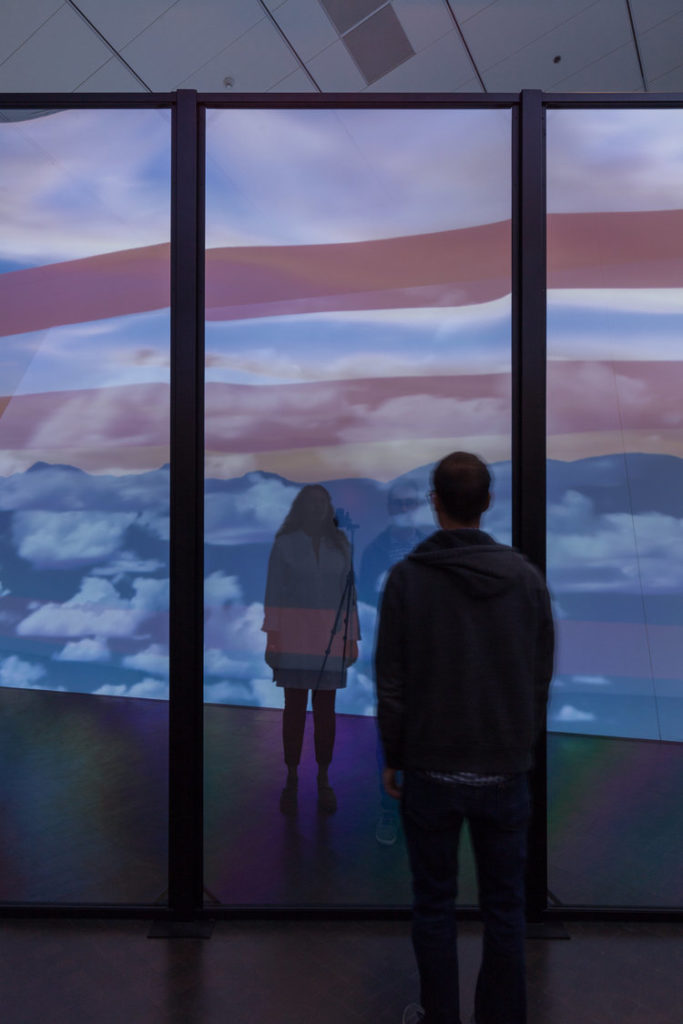
Using this Plexiglass with the 50/50 tint, Carrejo constructed One Way Mirror, his 10-foot-tall half-scale border wall replica, and used shifting lighting to ask questions over who has “privilege” based on which side of the wall they were standing on and what they saw as a result.
“Who has privileged sight?” he wonders. “Are we able to see all points within our political landscape, or do we only see the opaque point of view or our own point of view?”
He used film footage of El Paso and Juarez that he recorded on the border to serve as the backdrop of his wall to make it more immersive. He remembers border patrol watching his team “like hawks.” He decided to film sunrise on the Mexico side and sunset on the United States side from the same position.
“I was primarily interested in this idea of the passage of time and the landscape being so similar,” he said. “Both sides are the same space; they’re only defined by that line.”
He also filmed clouds, shrubbery, and the rest of the desert landscape in different ways. Sometimes the cloud footage would get almost completely dark, and then there would be bursts of light as the sun shined through. On the side of the wall with the darkening clouds, the mirror would become more opaque the darker it got, no longer allowing visitors on that side to see through it.
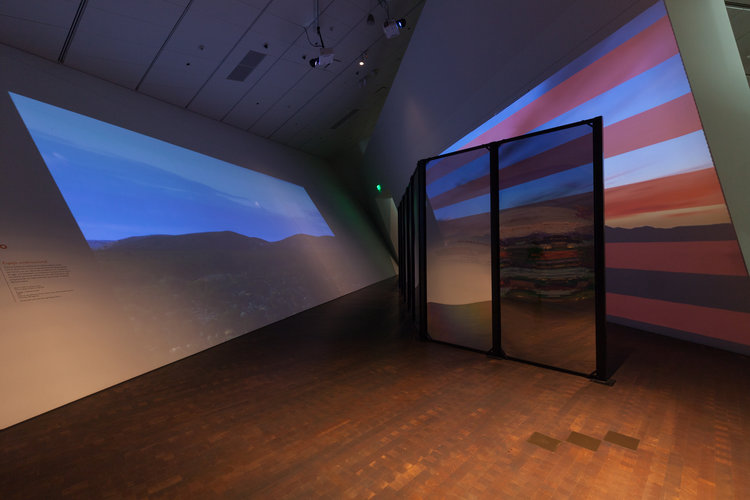
“For me it feels like, when life is good we only see the light on ourselves, but sometimes in darkness we see more,” says Carrejo. “I wanted to create an experience that viewers could go into, be submerged and orient themselves on what side they sit on, finding what side is privileged. When you walked into that space you had to choose a side to enter into, the U.S. side or the Mexico side, because when we’re born we don’t have that ability to choose our citizenship—you just are. Here I created a place where people orient their bodies and their definition of themselves in relation to others.”
He overlaid red bars representing the American flag that would fade in and out over the U.S. footage, and on the Mexico footage he overlaid Xs symbolizing barricades that would also fade in and out.
“The shape [of the X] is really powerful,” he explains. “That form casts many meanings that anyone can enter into it and know exactly what it means when you cross something out. I liked it as an entry point.”
He explored this idea of Xs on the border in another large-scale installation called Border/Land. In One Way Mirror the wall is sometimes less visible, taking on the reflections of the video and almost disappearing in the imagery. With Border/Land, the wall is very much there, and it is made of giant mirrored Xs with the words “BORDER” and “LAND” brightly lit on either side.
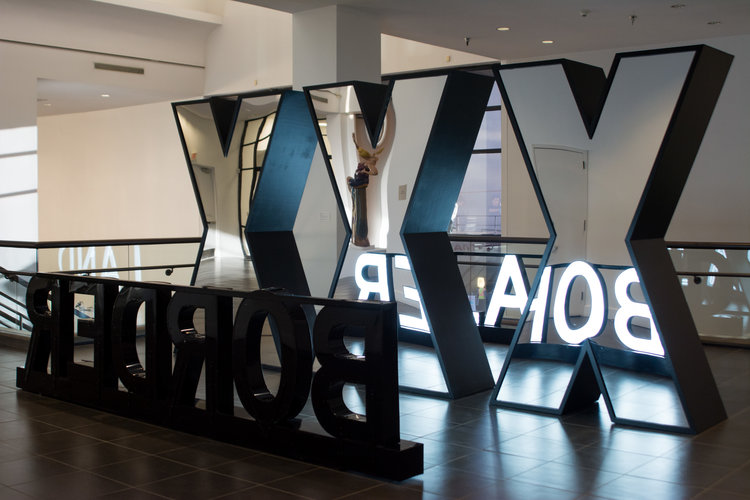
For this piece, Carrejo was inspired by the book Borderlands/La Frontera by the queer Chicana poet, writer, and theorist Gloria Anzaldúa. In this book she describes the idea of a border and a borderland as being a liminal space between people and gender and culture; it’s a complex space because people are complex. In the first chapter she talks about the border as being a wound created because by the old world and the new world grating against each other. It is one skin or one body that has been cut. It heals then cracks open and bleeds again, but it doesn’t break apart because the skin of the borderland is about a people who are unified.
“I was interested in the X form being a suture, and representing a poetic mending of the people in the borderland with the wall itself being the scar that was left behind.”
He split the word “borderland” in two and made the whole structure something people can pass through and easily flow from one side of the barrier to the other.
“It doesn’t matter. It’s just a structure. It only has power or meaning because of the people who give it power and meaning,” he says.
He also wanted there to be light because this is a dark political time, where politicians have tricked the public body and torn people apart.
“In ways we have given ourselves permission to be toxic to one another,” he says. “We live in the U.S. and we are incredibly privileged and blessed to be here, so if there’s room at the table why wouldn’t we allow people in need to sit at the table?”
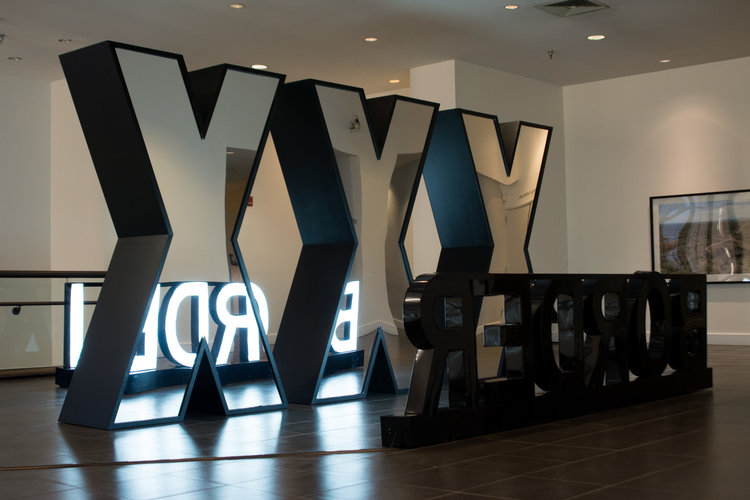
This piece was created for the El Paso Museum of Art, and Carrejo says it is also a bit of a love letter to his hometown.
Carrejo is currently working on another group exhibition opening in Denver in March, though this will be a smaller project in a 12×12 room. While he is still finalizing the details of what he will install there, his concept for it spun out of a poem he wrote the day the migrant camps along the Mexico—U.S. border were erected in October 2018. The poem, called “The Color of Cracked Earth,” explores the idea that “brownness” is not restricted to Latinos, but can be whoever describes themselves, or is described as, brown.
He has been doing more with sculpture lately, though he says he has an allegiance to ideas and not materials.
“I use whatever makes the most sense for that particular idea. It’s more about crafting the experience, whether that is a painting or an immersive installation. It’s about the experience I can create for others.”
While it can be difficult to find the light in our current dark time, Carrejo sees the swell of creative activism as a rare positive outcome to such a negative situation.
“The art world can be somewhat skittish about politics,” he says. “Maybe one of the blessings of this time is that more artists feel that they can come forward [with politically powerful work] because it’s so prevalent now.”

(1) How do you like to collaborate?
It depends on the collaboration. I think we as humans collaborate every day. When I work with curators or directors, I think of the project very much as a collaboration. I certainly have ideas I’d like to execute, but they certainly have bountiful information that could be useful too.
I used to work with a group called Barter Collective, which was all based on the idea of exchanging or bartering. We would create multiple projects about collecting our cultural histories through exchange. Our last project was collecting recipes. It was about food and food being a marker of culture and family history, but also a way for people to connect and build family whether that means blood ties, family ties, or friendship. But there is another side to it, those things we refer to as “recipes for disaster”—things you don’t want to think about.
One of the challenges with collaboration is ego. You have to let go of the things that YOU want to do. Collaboration exceeds the capacity of one person. It is very much about sitting back and listening and spending time together. It’s not fast; it’s a building of relationships and of ideas to execute a project.
(2) How do you a start a project?
It depends on the project! For me I’m always thinking about it, but it’s more a percolation of ideas. Generally my practice is to collect images from the media and archive them on my laptop. Usually it’s something I think is a really powerful image or breaks my heart in some way or makes me really happy, and as I start to think about those issues that might strike me, if it’s moving me in some way it might do the same for others, too. Then I think about things outside myself that people might respond to—what is the question of the day or time or year? I play with the basic workings of composition to have a better understanding of the material and color I’ll use so that when I get into making the work I have these ideas already, then I let the work change as it goes on.
(3) How do you talk about your value?
When I think about the value of what I do I think about why I started making art in the first place: it was a way to be able to talk about something words could not fully articulate. It was a way to create an experience that is outside of the regular language that we use every day.
Our time here is so short; if I can just find pockets where others can find a moment of reflection, that’s so important. We live in an age that’s so rush-rush-rush; art creates these little moments that can be really exciting or contemplative. They touch parts of us that we forget about, and that’s so important. [He references a quote:] “You can’t talk about art. You have to art about art.” You have to art about the culture in which art sits.
Also, thinking about artists, in some ways what we do is privileged and in other ways it is SO not. How people finance their work is really challenging. As a society, we value art higher the more people are exposed to it, so for me it’s really important to make sure it’s accessible from multiple fronts and not just for people who see art every day. I want to make sure the work steps outside that boundary for people who don’t see art every day.
I’ll also talk to my mom about pieces I’m working on. Art is not her language and if something doesn’t make sense to her I have to take a step back and ask if it’s okay for it to only be accessible for a smaller audience. I think communicating to a larger group is important.
(4) How do you define success?
I probably look at success more through the lens of, “What is time well spent?” I care and I don’t care about success. To me it’s more about time and whether or not something is worth an investment of time, because time is the most valuable thing we have. We take it for granted and yet we have so little of it—at one point our time here ends. To think of time well spent guides what I do.
I think of success with an artwork as when something moves someone. I volunteer as a docent and do a lot of tours at the Denver Art Museum, and someone would come up and be crying because they were moved by something in one of my pieces. That to me seems so much more meaningful than media or press coverage. When someone comes up and says my piece reminds her of when she lived in Germany when the Berlin Wall was still up, that to me is like, “Oh, this does resonate.” Another guy said to me, “I’ve never seen Latinos being celebrated like this in the art community.” To me that is the power or success of artists—when you’re able to move somebody or show them agency. That is pivotal.
When I look at success I would ask, did it move someone? Did it get someone to think about something in a different way because it’s beautiful or it touched them in some capacity?
(5) How do you fund your work?
That’s a complicated question. Most of the work I do is funded by institutions that are supporting them primarily because that’s the model I’ve adopted. If the budget is small I will not make a new work but use something that already exists. If it’s a larger project I will make an ask about the budget, suss out what’s doable, figure out how much the materials will cost and if I have to have something fabricated, and figure out the ballpark budget. Part of that collaborative process is determining what’s viable for that institution, trying to figure out what fits and something that the budget can contain. I was previously funding projects myself out of my own pocketbook through my work teaching at a college. If I can, I will have the institution fund it. If I can’t, I think about what I can make that’s impactful on a smaller budget.
